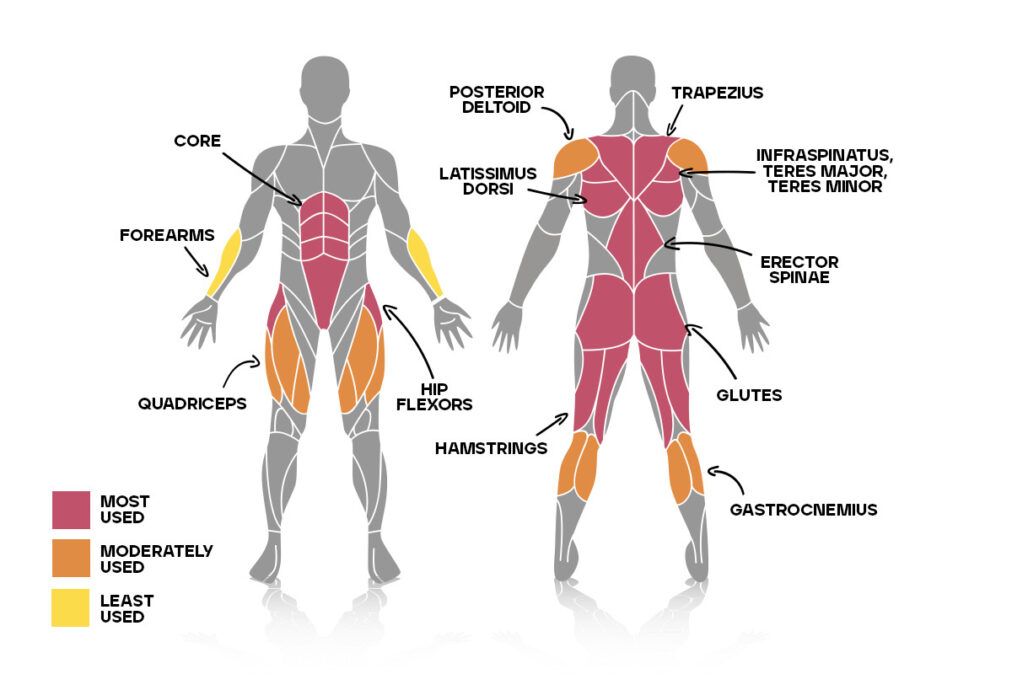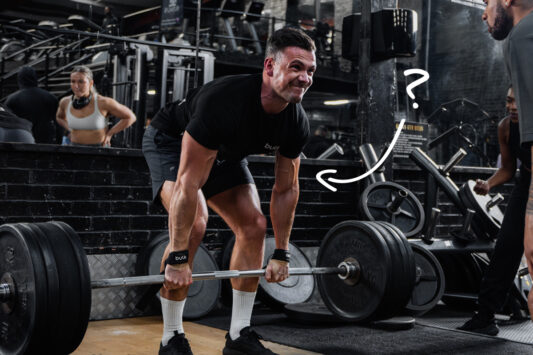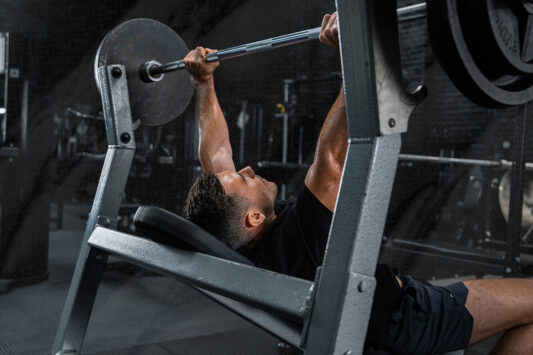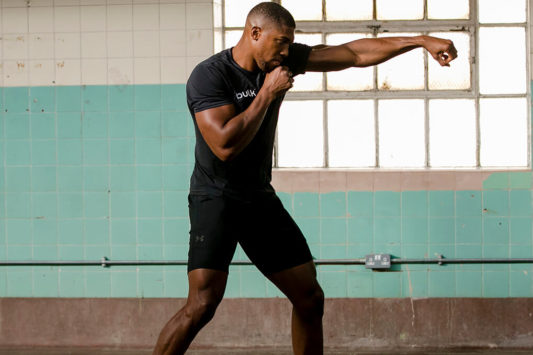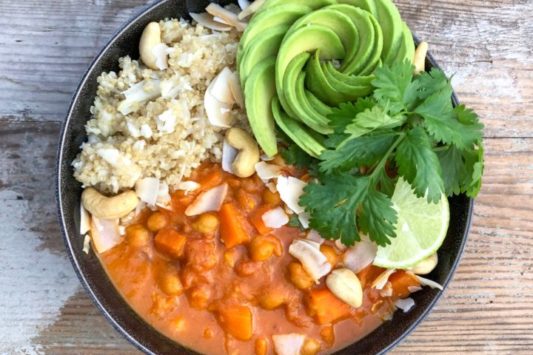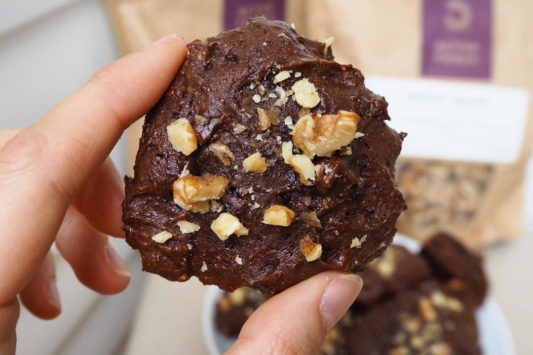Deadlifts are often hailed as the king of compound movements. And for good reason. For such a simple movement, the deadlift has many benefits. It improves posture, builds overall strength and engages multiple muscle groups at once. In this blog, we take an in-depth look at which muscle deadlifts work, exploring the primary and secondary muscle groups.
Simon Jurkiw, Product Director at Bulk™, has 20 years’ experience in nutrition as well as practical experience competing in both powerlifting and bodybuilding. Here’s what he said about which muscles the deadlift works.
“The deadlift is arguably the pinnacle of compound movements. It works nearly every muscle group in the body – if you had an injured big toe, it would hinder your ability to perform the deadlift. For that reason, the deadlift has (and always will be) part of my training programme, whether my goals are strength-based or to get a lean, aesthetic physique.”
DEADLIFT MUSCLES WORKED: ANATOMY DIAGRAM
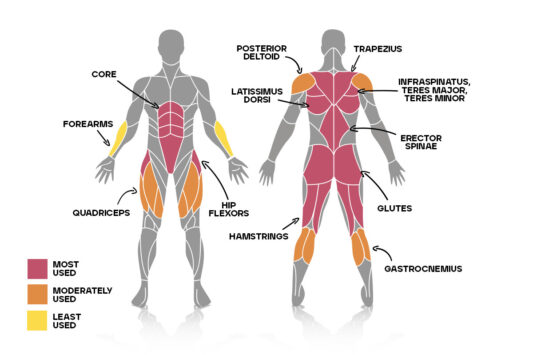
WHICH BACK MUSCLES DO DEADLIFTS WORK?
LATISSIMUS DORSI
These are the biggest muscles in the back. The latissimus dorsi (lats) are two large, triangle-shaped muscles on either side of the spine, working together to keep the spine stable. The lats function to maintain a neutral position of the upper back and to keep the bar close throughout the pull.
Although deadlifting with a rounded upper back is acceptable, excessive rounding can cause issues, particularly with locking out. The lats work to maintain a neutral (or straighter) upper back position, preventing the shoulders from moving forward.
TRAPEZIUS
This is a large, triangular muscle that extends from the base of the skull to the mid-back. It’s responsible for stabilising and moving the shoulder blades. In the deadlift, the traps must withstand large amounts of weight using isometric contraction. It transfers force from the lower back, up through the shoulders.
ERECTOR SPINAE
The erector spinae is a group of muscles that run along the spine from the base of the skull to the pelvis. They help to extend and rotate the spine; vital for maintaining good posture. During the deadlift, they help to stabilise the spine, keeping it locked in position.
HIP FLEXORS
The hip flexors are a group of muscles that run from the hip bone to the thigh bone. They are needed for flexing the hip join; crucial for the hinge movement at the centre of the deadlift.
POSTERIOR DELTOID
The deltoids, commonly referred to as the shoulders, are made up of three heads: the anterior (front), lateral (middle) and posterior (back). The posterior deltoid, or rear delt, is responsible for shoulder extension (pulling the arms backwards), as well as shoulder horizontal abduction (raising the shoulders outwards).
The front two heads get worked a lot in push movements like bench press, while the posterior is stimulated on pull movements.
TERES MINOR AND MAJOR
The teres minor and major are two small muscles located on the back of the shoulder blade. They work together to help rotate the arm outwards and lift the arm away from the body.
Like the traps, they isometrically contract to help withstand the weight during the deadlift. The infraspinatus, a nearby muscle located on the back of the shoulder blade, is part of this too.
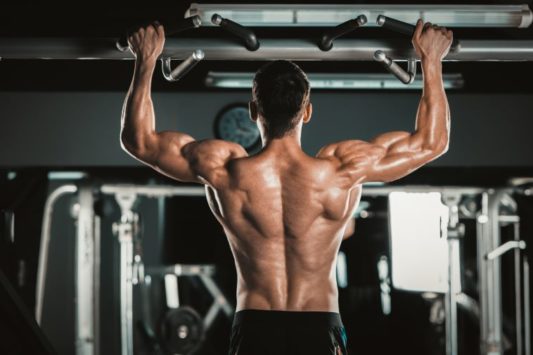
WHICH LEG MUSCLES DO DEADLIFTS WORK?
GLUTES
The glutes, or gluteal muscles, are the large muscles in the buttocks. They’re vitally important for hip extension, hip abduction and hip external rotation. A key part of the deadlift.
HAMSTRINGS
The hamstrings are a group of three muscles located on the back of the thigh. They are responsible for knee flexion (bending the knee) and hip extension. The hammies support the glutes in hip extension during the lockout. As the knees straighten, the hamstrings are engaged more to bring the hips to the bar.
QUADRICEPS
The quadriceps are a group of four muscles located on the front of the thigh. They are needed for knee extension (straightening the knee).
The quads contribute to the deadlift by assisting with knee extension, sometimes described as leg drive. Like the glutes, the quads must be in a solid position, as the
knee is only bent a small amount.
GASTROCNEMIUS
More commonly known as the calf muscle, the gastrocnemius is a muscle located on the back of the lower leg. It’s mainly used for plantarflexion, or pointing the foot downward. However, it also plays a role in knee flexion, shortening when you bend your knees during the deadlift.
WHAT MUSCLES DO DEADLIFT VARIATIONS WORK?
ROMANIAN DEADLIFT
Romanian deadlifts target the posterior chain, mostly the glutes, hamstrings and lower back muscles. They also work the quadriceps, calves and core muscles. For more detail on how these movements differ, see our blog on the difference between Romanian deadlift and deadlift.
STIFF-LEG DEADLIFTS
As the name implies, the main difference between stiff-leg deadlifts and conventional deadlifts is that you keep your legs almost straight ( or stiff) throughout the entire range of motion. This turns the exercise into almost a pure hip hinge, reducing the involvement of your quads. As a result, there’s extra work for your posterior muscle groups.
TRAP-BAR DEADLIFTS
Trap-bar deadlifts work the same muscle groups as conventional deadlifts, including the quadriceps, hamstrings, glutes and lower back muscles. However, due to less need to lengthen and hinge your back, there is less stress on the lower back and more on the quadriceps.
Many athletes tend to do trap bar deadlifts due to their ability to help increase vertical jumps. For that reason, trap-bar deadlifts are one of the best gym exercises for footballers.
SUMO DEADLIFTS
Sumo deadlifts primarily target the inner thigh muscles (adductors), as well as the glutes, quadriceps, hamstrings and lower back muscles. They also engage the core muscles. This variation is often preferred by powerlifters as it is easier to lift a heavier load.
In terms of muscle activation, there are some slight differences. Sumo deadlifts activate the quads (thigh muscles) to a greater extent, while conventional deadlifts activate the hamstrings (back of the thigh) to a greater extent. Since the sumos keeps your back more upright and there is less of a hinge movement, there’s less strain on the spine and hip flexors.
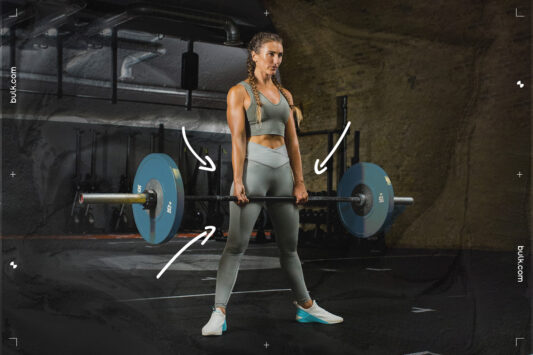
WHAT OTHER EXERCISES WORK THE SAME MUSCLE GROUPS?
Several exercises work the same muscle groups as the deadlift, which can be included in your workout routine to complement and enhance your deadlift performance.
The back is a big part of the deadlift. So many pull day exercises work the same muscles, such as pull-ups, rows and lat pull-downs work the upper regions of the posterior chain.
Posterior chain exercises also include leg movements like squats, which work the lower portion of the posterior chain.
FAQS
WHAT ARE DEADLIFTS GOOD FOR?
Deadlifts are great for building overall strength and power, especially in the legs, glutes and back muscles. They can also improve posture, increase grip strength and help with injury prevention.
ARE DEADLIFTS FOR LEGS OR BACK?
Both. Deadlifts work the entire posterior chain, including both leg and back muscles, from the hamstrings to the lats. They also work the anterior chain, including the quadriceps and core. Overall, they are an incredible compound exercise for building overall strength.
See our in-depths guides for more information on Leg day and Push day.
Deadlifts work multiple muscle groups, but the muscles that are worked the most include the glutes, hamstrings and lower back muscles.
DOES DEADLIFT BUILD ANY MUSCLE?
Yes, deadlifts help build muscle in the legs, glutes and back muscles. They provide a great base for your physique, helping to keep muscular imbalances at bay and improve the rest of your lifts.
SHOULD BODYBUILDERS DO DEADLIFTS?
Yes, bodybuilders can benefit from incorporating deadlifts into their training program. Deadlifts are a great compound exercise that can help build overall strength and muscle mass.
HOW DO YOU DEADLIFT CORRECTLY?
To deadlift correctly, stand with your feet hip-width apart and your toes pointing forward. Place your hands on the barbell with a grip that is slightly wider than shoulder-width apart.
Keep your chest up and back straight, then engage your core muscles. Lift the barbell by pushing through your legs and keeping your back straight. As you lift, keep the bar close to your body and stand up straight with your hips fully extended.
If you’re interested in learning how to increase your deadlift, see our more detailed guide.
ARE DEADLIFTS BAD FOR YOU?
Deadlifts are generally safe when performed with proper form and technique. However, improper form or lifting too heavy weights can increase the risk of injury, particularly to the lower back.
It’s important to start with lighter weights and focus on proper form before progressing to heavier weights. Additionally, those with existing back injuries or conditions should consult with a healthcare provider before performing deadlifts. As one study suggests, ‘ Athletes and coaches, however, should be aware that lower back pain may occur using heavy loads in the deadlift. To avoid injuries, a correct technique should be maintained even when repetitions to exhaustion are performed’ [1].
SUMMARY
The deadlift is a compound exercise that works several muscle groups simultaneously, making it one of the most effective exercises for building strength and muscle mass. While the primary focus is on the posterior chain, such as the glutes, hamstrings and erector spinae, the exercise also engages the quads, core and upper back muscles.
Incorporating the deadlift into your training routine helps improve your overall fitness, enhance athletic performance and promote better posture and spinal health. However, it’s essential to perform the exercise with proper form and technique to maximise the benefits and avoid injury.
We believe in encouraging everyone to find their passion for exercise. For more fitness content check out @bulk for recipes, ambassador workouts and gym tips. Join our community of fitness lovers and foodies.
